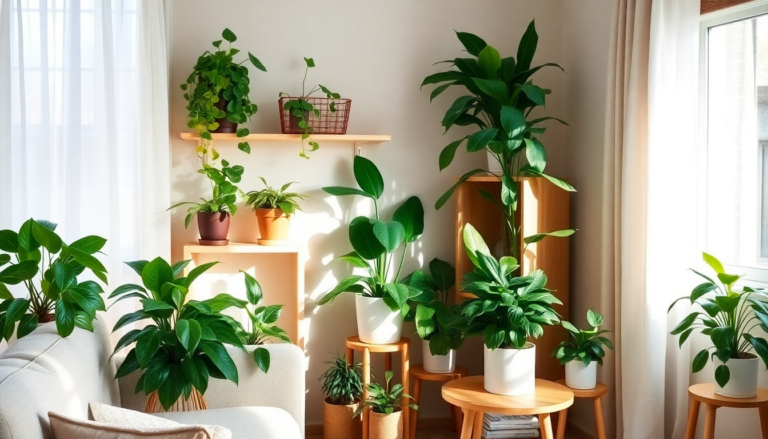Argomenti trattati
As the days stretch longer and the weather warms up, many of us yearn to embrace the outdoor beauty. However, transforming your indoor space with vibrant houseplants can be just as rewarding, regardless of the season. Houseplants not only breathe life into your home but also serve as wonderful companions throughout the year. For those of you living in areas with limited natural light or still facing cooler temperatures, fear not! There is a variety of low-light indoor plants that can thrive in the trickiest of conditions, ensuring your home remains a sanctuary of greenery.
Why choose low-light indoor plants?
Low-light indoor plants are the perfect solution for anyone looking to beautify their home without the burden of excessive maintenance. Many of these plants originate from tropical environments, such as rainforests, where they naturally flourish in filtered light. This adaptation makes them an excellent choice for spaces that may not receive direct sunlight, such as north-facing windows or shaded corners. By choosing low-light plants, you’re not only enhancing your home’s aesthetic but also creating a cozy oasis that requires minimal effort. They are ideal for new plant parents or those living in apartments with limited exposure to sunlight.
Getting started with easy-care plants
If you’re new to indoor gardening, it’s wise to start with low-maintenance plants that can help you build your confidence. Consider the spider plant or pothos, both known for their hardiness and ability to adapt to various conditions. These plants not only require infrequent watering but also thrive in lower light, making them excellent choices for beginners. As you grow more comfortable with your care routine, you can gradually expand your collection to include more challenging varieties.
Top low-light plants to consider
Here’s a selection of low-light indoor plants that can elevate your space:
- Blue star fern: Known for its stunning T-shaped leaves, this fern thrives in humid environments. Daily misting or clustering with other plants can help maintain moisture levels.
- Arrowhead plant: Featuring angular leaves with white centers, this plant is relatively easy to care for. It prefers indirect light and requires daily misting to keep it happy.
- Calathea musaica: This unique plant opens and closes its leaves with the sun, thriving in indirect light and requiring distilled water for optimal growth.
- Begonia rex: With its vibrant colors, this plant loves bright, indirect sunlight. It adapts well to room temperature and enjoys humidity.
- Red anthurium: Often called the flamingo flower, it produces stunning blooms that can last for weeks, adding a pop of color to your indoor garden.
Maintaining your low-light indoor plants
While low-light plants are generally easier to care for, it’s essential to understand their specific needs. Watering is crucial, but frequency will vary depending on the plant type and environmental factors. For example, the blue star fern should be watered weekly, while the snake plant may only need watering every six to eight weeks. Always check the soil moisture before watering to avoid over-saturation, which can lead to root rot.
Humidity and light considerations
Many low-light plants thrive in humidity, so consider grouping plants together or using a humidity tray. Placing a shallow dish filled with water and pebbles beneath your plants can create a microclimate that encourages growth. Additionally, while these plants tolerate low light, they still require some indirect sunlight. Position them near a window or in a well-lit room to help them flourish.
Pet-friendly options
If you have pets, it’s crucial to choose non-toxic plants. Options like the spider plant and bromeliads are safe for cats and dogs, allowing you to create a vibrant indoor garden without worrying about your furry friends. Always research any plant’s toxicity before introducing it to your home, ensuring a safe environment for all inhabitants.
Conclusion: Embrace the green indoors
Transforming your indoor space with low-light houseplants is an excellent way to bring nature inside and enhance your home’s ambiance. With the variety of resilient plants available, there’s no reason to shy away from indoor gardening. Start small, learn the care techniques, and soon you’ll have a thriving indoor jungle that reflects your personality and style. Let the journey of indoor gardening inspire you and brighten your living space!

